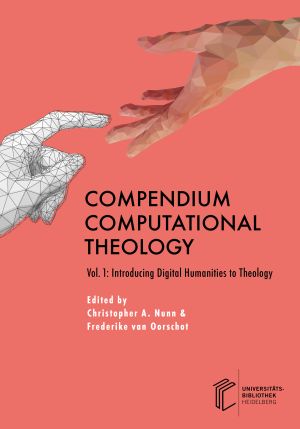Zitationsvorschlag
Lizenz (Kapitel)

Dieses Werk steht unter der Lizenz Creative Commons Namensnennung - Weitergabe unter gleichen Bedingungen 4.0 International.
Veröffentlicht
Computational Theology and Information Visualization
Abstract Information visualization assists in interpreting theological texts by allowing for close and distant readings. For close reading, visualization allows the comparison of manuscripts and linguistic features of a theological text. Distant readings using information visualizations of theological texts follow the schema of Moretti’s graphs, maps, and trees. Oxford’s Paul and Patristics project, helmed by Jenn Strawbridge, and Coptic Scriptorium, created by Carrie Schroeder, use graphs to illustrate word counts. Maps can be made using Stanford’s ORBIS, an interactive map of geographical, economic, and social data of the late antique Mediterranean. Stanford’s Palladio, which was originally designed to analyze social networks of elite medieval families, can visualize the location of Dead Sea Scrolls among the various Qumran caves and the Cairo Genizah. Trees have followed in the formidable legacy of Busa’s Index Thomisticus. Advantages of these readings include the ability to assemble data on word count, variants, emendations, morphology, syntax, and the cultural backgrounds of manuscripts. Disadvantages to information visualization range from distorting the certitude of the translation or network via aesthetics to the durability of the analytical programs and final produced media. Possible future applications of information visualization in theological studies could look to the Map of Science, visualizing the networks of various researchers and their projects, and recreations of locations described by texts and locations in which texts were performed, read, and reproduced through visualization projects using technology such as augmented and virtual reality.
Keywords History of Visualization, Graphs, Maps, Trees, Close Reading, Distant Reading, Theological Data Visualization



